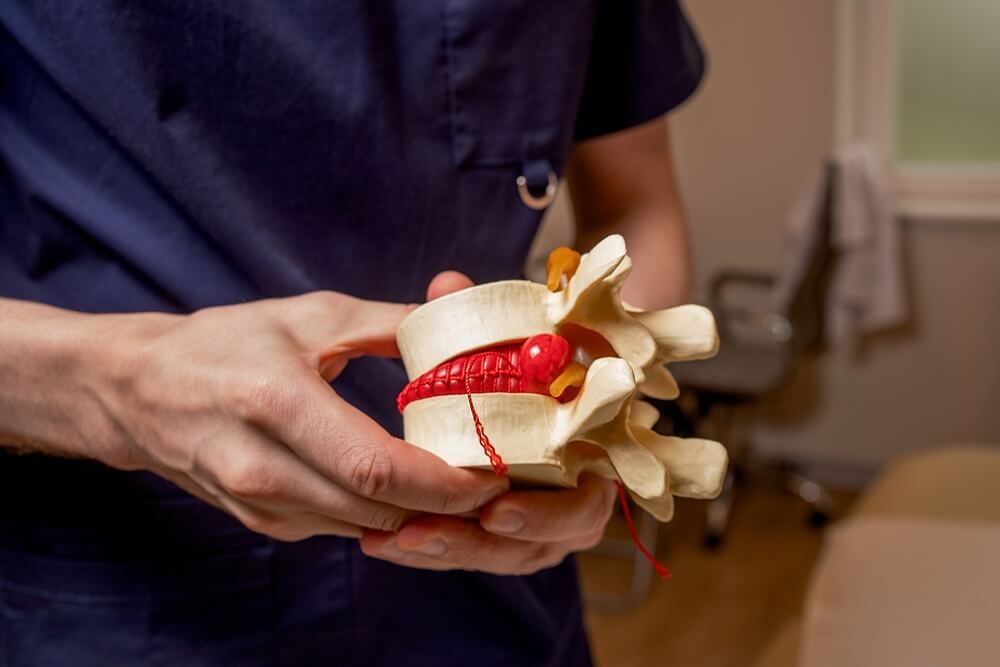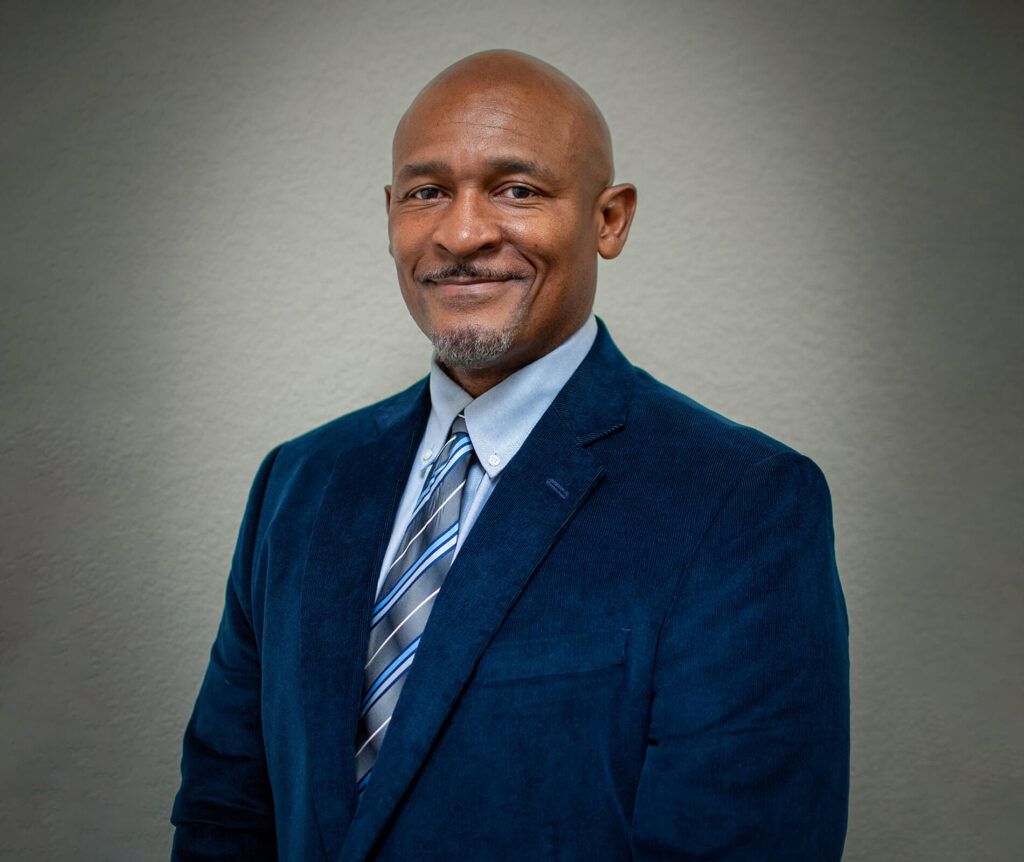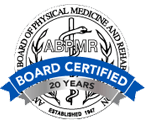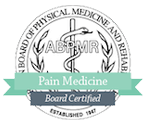A herniated disc (also called a ruptured or slipped disc) is a damaged “cushion” between two bones in the spine (vertebrae). Normally, the gelatinous discs between the vertebrae hold the bones in place and act as shock absorbers, permitting the spine to bend smoothly. When a disc protrudes beyond its normal parameters, and its tough outer layer of cartilage cracks, the disc is considered “herniated.”
When a disc bulges through torn cartilage, it can press on a nerve in the spinal canal. This results in back pain; if pain extends to the buttocks and travels down the affected leg, it is called “sciatic” pain. Herniated discs occur most frequently in the lumbar (lower) region of the back, and are one of the most common causes of back pain. Cervical (neck) discs also herniate, resulting in pain in the neck and shoulders.
Causes of a Herniated Disc
During the normal process of aging, the discs in the back lose flexibility and wear down. Additional stress, whether from obesity, smoking, heavy lifting or sudden traumatic injury, can then cause herniation.
Symptoms of a Herniated Disc
In addition to pain emanating from the herniated area, patients can experience numbness, tingling, muscle spasms or weakness. The pain that results from a herniated disc is usually worsened by moving, and improved by rest. Sudden motions, such as bending or coughing, can elicit sharp, shooting pain.
Diagnosis of a Herniated Disc
In order to make a diagnosis, a patient’s medical history is taken, and a determination made as to whether pain has been increasing gradually or was precipitated by a traumatic injury. A comprehensive physical exam, which includes a check of reflexes, sensation/numbness, posture and muscle strength, helps in assessing the situation. Usually, the patient is examined sitting, standing and walking.
In most cases, imaging tests are administered to provide a more precise visualization of the spine. They are used to determine whether there is a disc injury and, if there is one, to delineate its size and location. Tests include X-rays, MRI or CT scans, electromyograms (which measure nerve impulses), and myelograms (in which contrast dye highlights the affected region).
Treatment of a Herniated Disc
Conservative treatment for herniated discs usually begins with bed rest, and taking anti-inflammatory and pain medications as needed. Applying hot or cold compresses, sometimes alternately, may be recommended. Muscle relaxants may be prescribed to diminish muscle spasms in the back. Sometimes, a course of physical therapy to stretch and strengthen back and abdominal muscles provides relief. Epidural injections of a corticosteroid may be administered to reduce nerve irritation and facilitate healing. For some patients, chiropractic care or some type of alternative medicine provides relief.
When the condition does not respond to these measures, and the patient is still experiencing pain, surgery may be necessary. This is true in approximately 10 percent of herniated disc cases. The type of procedure performed depends on where the herniated disc is located, and the severity of the damage. There are several surgical options. All of these operations are performed in the hospital under general anesthesia:
- Laminotomy
- Discectomy
- Arthroplasty
- Spinal fusion
During laminotomy, the protruding portion of the disc is excised, whereas during discectomy, the entire disc is removed. During arthroplasty, the herniated disc is replaced with an artificial disc. In more severe cases of herniation, spinal fusion may be necessary. During this procedure, vertebrae are fused using a bone graft or metal rod.




